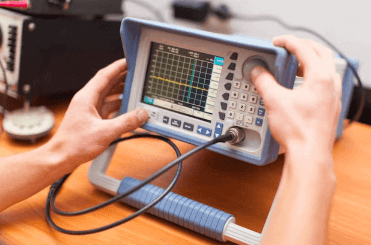Question
a.
increases the range of transmitter
b.
does not increase the range of transmitter because propagation is limited by tilt
c.
decreases the range of transmitter because propagation is limited by tilt
d.
increases the range of transmitter because propagation is through space waves
Posted under Electronics and Communication Engineering
Interact with the Community - Share Your Thoughts
Uncertain About the Answer? Seek Clarification Here.
Understand the Explanation? Include it Here.
Q. In MF range, increasing the transmitter power
Similar Questions
Explore Relevant Multiple Choice Questions (MCQs)
Q. The most frequent users of long distance VLF transmission is
View solution
Q. BFO stands for
View solution
Q. SSB-SC stands for
View solution
Q. A lens has a hyperfocal distance of 7.5 m. It is focused at 7.5 m. Then
View solution
Q. In FM 'guard band' is provided
View solution
Q. Assertion (A): FM requires more bandwidth than AM
Reason (R): Wide band FM is used for broadcast transmissions.
View solution
Q. A frequency doubler has an FM signal input at 13 MHz with a deviation of 5 kHz. The output, frequency for the carrier will be
View solution
Q. In FSK no synchronous carrier is needed at the receiver
View solution
Q. When the modulating frequency is doubled, the modulation index is halved and the modulating voltage remains constant. The modulation system is
View solution
Q. Vividh Bharti programme is transmitted in
View solution
Q. In a Vidicon camera tube, the beam current is controlled by
View solution
Q. If D is diagonal and F is focal length, lens angle θ is
View solution
Q. Present day stereophonic systems have
View solution
Q. RF choke used for suppressing interference in TV is generally
View solution
Q. Indicate the false statement: To combat noise
View solution
Q. Audio and video signals are called modulating waves.
View solution
Q. Johnson noise is
View solution
Q. Which of the following is unlikely to happen when quantising noise is decreased in PCM?
View solution
Q. For real and odd signals, the Fourier series coefficient an is
View solution
Q. An amplitude modulated wave is
e = 50 (1 + 0.4 cos 1000 t + 0.3 cos 10000 t) cos 10⁷ t
View solution
Recommended Subjects
Are you eager to expand your knowledge beyond Electronics and Communication Engineering? We've handpicked a range of related categories that you might find intriguing.
Click on the categories below to discover a wealth of MCQs and enrich your understanding of various subjects. Happy exploring!








